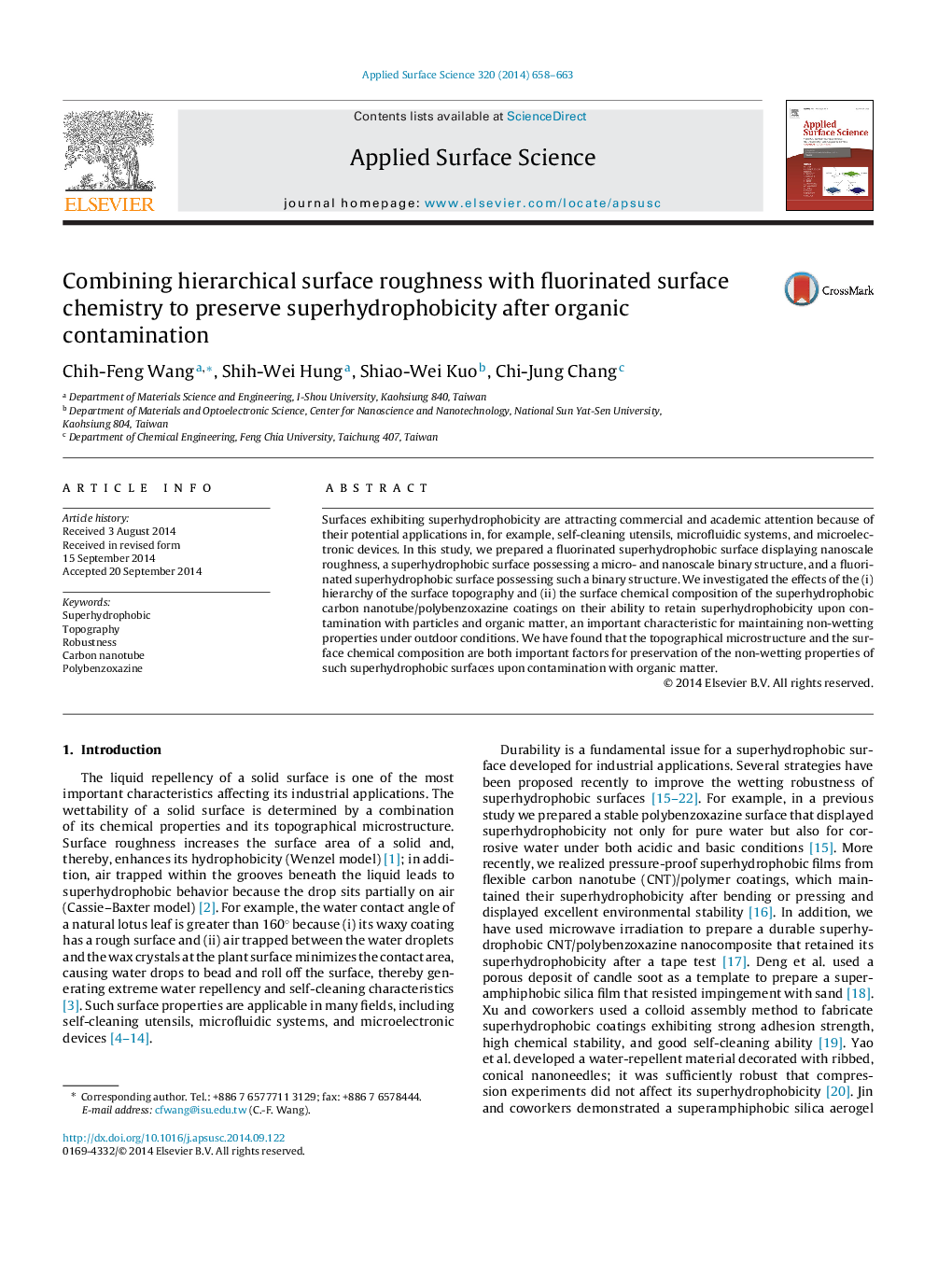| Article ID | Journal | Published Year | Pages | File Type |
|---|---|---|---|---|
| 5349679 | Applied Surface Science | 2014 | 6 Pages |
Abstract
Surfaces exhibiting superhydrophobicity are attracting commercial and academic attention because of their potential applications in, for example, self-cleaning utensils, microfluidic systems, and microelectronic devices. In this study, we prepared a fluorinated superhydrophobic surface displaying nanoscale roughness, a superhydrophobic surface possessing a micro- and nanoscale binary structure, and a fluorinated superhydrophobic surface possessing such a binary structure. We investigated the effects of the (i) hierarchy of the surface topography and (ii) the surface chemical composition of the superhydrophobic carbon nanotube/polybenzoxazine coatings on their ability to retain superhydrophobicity upon contamination with particles and organic matter, an important characteristic for maintaining non-wetting properties under outdoor conditions. We have found that the topographical microstructure and the surface chemical composition are both important factors for preservation of the non-wetting properties of such superhydrophobic surfaces upon contamination with organic matter.
Related Topics
Physical Sciences and Engineering
Chemistry
Physical and Theoretical Chemistry
Authors
Chih-Feng Wang, Shih-Wei Hung, Shiao-Wei Kuo, Chi-Jung Chang,
